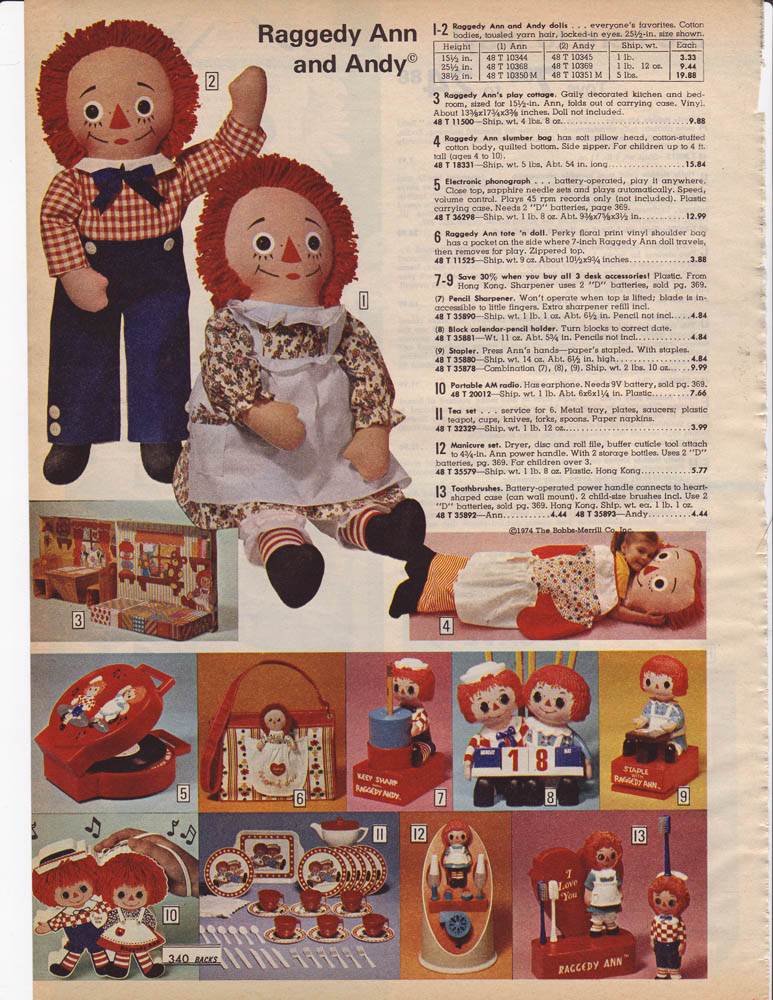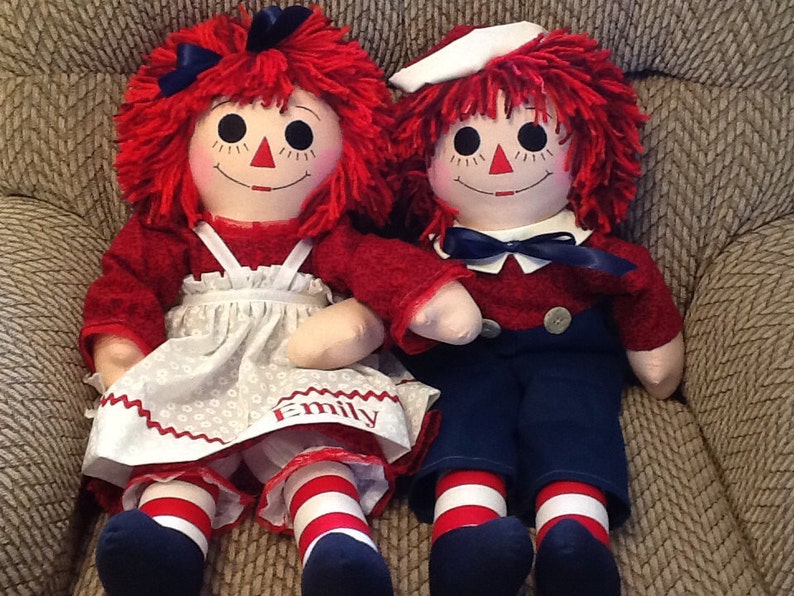

Both have red-orange noses (Raggedy Ann’s is outlined in black) large, black bead eyes sewn-on boot-like fabric feet large hands and thumbs that seemed to be a Beers hallmark. These were 30″ to 36″ tall, but otherwise the same as the more common version.
#RAGGEDY ANN AND ANDY LICENSE#
While most of the dolls produced under license from Volland were 16″ to 18″ tall, a few such as these were almost twice as big. 16″ substantial heads disproportional large hands and thumbs crescent shaped smiles with red rectangular centers muslin bodies machine-printed faces with shoe button eyes red and white striped legs and sewn-on fabric feet cut lower than Ann’s stitched-down “joints” on their legs/arms no black nose outline sewn-on clothing (plaid shirt attached to blue cotton pants) mother-of-pearl shirt buttons at waist and each trouser leg wigged in various shades of reddish brown yarn crescent-shaped blue and white cap 1925 heads were scaled down slightly modified faces. The two friends played with their brother-and-sister dolls constantly. Legend holds that a friend of Johnny’s sister visited him and brought him Raggedy Andy and told him this doll had been made by her mother at the same time Johnny’s mother made Raggedy Ann.

Raggedy Ann’s brother, Raggedy Andy, made his appearance in 1920.

Later “Patent” Raggedy Ann’s changed slightly: heads grew rounder and fuller printed facial features became darker wigs became lusher. 15″, 16” machine-applied faces fuller triangular nose outlined in black black-line smile blushed cheeks eyebrows that curve downward at the outside red/white striped legs cardboard hearts black sewn-on feet removable cotton or challis dresses (usually a paisley or floral print) white cotton pinafores and pantaloons wigs are of heavier brown yarn that usually incorporate looped-yard bangs and topknot. The primary distinguishing feature of the “Patent” Raggedy Ann doll was that she had the words “Patented Sept. Later “Cottage” dolls had sewn-on black or brown fabric feet challis dresses of earth-tone prints some dolls posses blue/white striped legs. 15″, 18″ muslin bodies stuffed with cotton batting wigs of medium-weight brown wool yarn hand-applied faces (a painted-on line smile, a narrow, red triangular nose thinly outlined in black, eyebrows and lower lashes, sewn-on black shoe button eyes) painted-on Mary Jane style shoes (red/white striped leg fabric is visible) blue floral print challis dress (striking match for the dress fabric Gruelle had depicted on the cover of Raggedy Ann Stories) white cotton pinafores and pantaloons small, dense cardboard heart set between cotton stuffing and chest fabric. It was one of the first ever merchandise/media marketing tie-ins. Volland, licensed the Non-Breakable Doll & Toy Company to mass-produce dolls which were sold along with each copy of the book. Johnny Gruelle entertained Marcella by inventing stories about Raggedy Ann, and in 1918, published a book containing some of those stories. Body has loosely jointed limbs stuffed with white cotton long face with hand-painted features brown yarn hair candy heart in body homespun calico dress and white apron typically marked with rubber-stamped date on tummy/back or unmarked very rare. The first 200 or so dolls to be sold commercially where handmade by members of the Gruelle family. He gave it to Marcella and it became her favorite toy. Johnny retrieved that original doll from his mother’s attic. Different accounts vary, but one version of the legend goes that after his own daughter, Marcella, was born in 1902. The very first Raggedy Ann was made by Johnny Gruelle’s mother for his sister.

A favorite of many generations, I have stitched together her evolution to remember 100 years of memories. A little over one hundred years later, the beloved rag doll celebrated her centennial. Why was she called Raggedy Ann? Johnny and Marcella came up with the name by combining the titles of two poems, “The Raggedy Man” and “Little Orphan Annie.” written by a family friend, the poet James Whitcomb Riley. The brainchild of Johnny Gruelle, the initial patent for Raggedy Ann granted for an “all-cloth doll will show button eyes, a painted face, brown yarn hair, a dress, pantaloons, a pinafore, striped legs, and black cloth shoes” in 1915. There is the teddy bear, jigsaw puzzles, Crayola crayons, and Raggedy Ann & Andy. There are not many toys that have been around for 100 years or more.


 0 kommentar(er)
0 kommentar(er)
